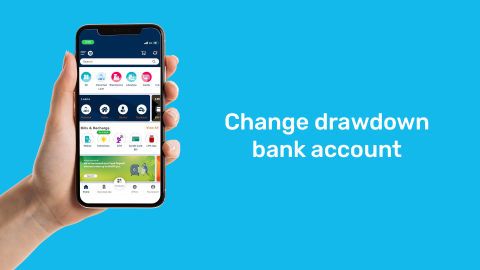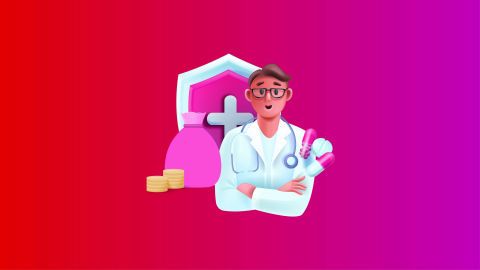Very soon, your mobile assistant will be able to tell you the reason behind that niggling back pain. Your smartphone will be your health advisor, thanks to mobile health (mHealth) - the practice of medicine and public health supported by mobile devices.
mHealth: The Indian scenario
India ranks second among developing economies in adopting mHealth, according to PricewaterhouseCoopers.
A recent primary research study by Wipro and the Internet and Mobile Association of India found a rapid end-user demand for mHealth in India.
The mHealth Ecosystem: A study for 2015 to 2030 estimates that the mHealth market would have made nearly $18 billion in 2016 alone. Despite the roadblocks associated with regulation, patient adoption and confidentiality concerns, data shows that the mHealth market registered a CAGR of nearly 40% till last year.
India has shown significant mHealth movements in recent years.
- Aravind Eye Hospital System’s mobile health units are renowned for their use of wireless technology.
- The Apollo Telemedicine Networking Foundation has more than 70 telemedicine midpoints across India enabling third-party contractors to reach out to rural areas.
- The government has commissioned projects for a range of national telemedicine arrangements and structures, even within oncology and disease monitoring.
A huge investment opportunity for medical professionals
India’s footprint in mHealth is still tiny, despite this increasing technology adoption. With a largely under-served rural population, there’s a huge uncaptured market for medical professionals to leverage.
As healthcare professionals look for ways to maximise their patient outreach while reducing expenses, many view mHealth as the answer to achieving cost-effectiveness. mHealth provides many opportunities to the pharma industry, from research and development pursuits to their fight against spurious medicines.
The burden of elevated non-communicable illness has aggravated India’s healthcare troubles. Degenerative maladies are the leading causes of death, and healthcare can change this scenario. There are two clear-cut market opportunities:
- Access to healthcare can be extended to rural areas with services with limited capacity.
- Healthcare can be concentrated on the urban affluent who can bear the cost of expensive monitoring utilities that can enrich their health.
How can doctors invest in mHealth?
Doctors can either invest in apps that provide access to health records, diagnosis, prescriptions etc., or those that assist in health management, monitoring and physician appointments.
The cost to build an app can range between $5,000 and $15,000. Information technology companies that build apps can deliver a complete, customised healthcare app within six to eight weeks. The expenses to build a tailor-made medical app is dependent on a developer's rates, total extent and quality of the app design, functionality and additional features.
A business loan for doctors with a high loan amount of Rs. 80 lakh helps physicians fund this investment and cash in on the booming mHealth market.
The Current Trends
With the advent of mHealth, treatment can go beyond the confines of conventional healthcare institutions to treat patients wherever they are improving outcomes and reducing costs.
Technology innovation
Social networking, cloud computing and big data analytics are the cornerstone for patients to get healthcare is not just expensive medical centres and far-flung speciality clinics but their localities and surroundings.
Smart mobility
mHealth apps empower patients by giving them easy access to their online medical reports. Thanks to smartphones, end-users are taking part in health-connected dialogue online.
M-Health Apps:
Empowers patients to obtain greater charge of their online medical reports thereby, improving their well-being. Thanks to smartphones,end-users are taking part in health-connected dialogue online.
Advanced mobile disease detection
Detection devices for blood pressure, pulse rate, etc., are now wirelessly linked to smartphones, with some facilities built into the devices.
Drivers accelerating mHealth
Increasing consumer expectations: Patients will increasingly expect the healthcare system to answer their queries within an hour or a day.
Growing cost-consciousness:
Patients are likely to expect better information and healthcare exchanges from commercial sites and insurance providers.
Demand for mobile services:
Providers of mHealth solutions can take a cue from their counterparts in other industries.
- Social networks: A broad platform for physicians for patient-centric experimentation as they share best practices and encourage positive lifestyle change among peer groups.
- Fight counterfeit drugs: Through SMS, consumers can now check the authenticity of medications through SMS.
Challenges to mHealth
The big data challenge: The more the quantity and quality of data, the more healthcare providers and patients would benefit. According to research firm IDC, data is growing at an annual rate of 40% and the challenges to improving healthcare lie in controlling the data. Big data challenges analysts to detect, examine, incorporate, and communicate with real-time information and connected programs. Problems may occur due to a lack of appropriate intelligent tools, convenience and proper training.
Confidentiality and ‘Big Brother’ fears: The rise of big data has triggered security concerns as there is a need for data to reach the right people. With the recent spate of data hacking incidents worldwide, the risk of exposing private healthcare information has never been greater.
The bring-your-own-device challenge: Medical organisations grapple to secure data within their premises.
The talent challenge: Very few people have the requisite knowledge in mobile technology to drive the development of healthcare mobility as quickly as stakeholders would like.
The way forward
Emerging markets, emerging solutions: Unbalanced health infrastructure offers rural India and the urban poor basic care. However, with rapid economic growth, citizens demand better health infrastructure and improved services, pressuring the government to raise its healthcare spending. Almost 32% of mHealth professionals, in a survey conducted in June 2016, said that remote monitoring has the greatest market potential in the mobile health app category worldwide.
Greater need and fewer options: Due to a scarcity of physicians and much of the population living in the countryside, medical care is often given by those with only the most basic training. In such cases, mobile technology is the best and the only viable instrument to reach rural India.
From technology to solutions worth buying: For mHealth to be adopted rapidly, companies need to offer services and products on price points that appeal to citizens.
Ingredients for a successful mHealth model
For a successful mHealth model, mobile health applications must:
- encompass inter-operability with detectors and mobile devices
- integrate current activities of patients
- provide intelligent and authentic solutions
- enable data to be shared
- adopt practices to maximise ROI
- get feedback through patient engagement
DISCLAIMER:
While care is taken to update the information, products, and services included in or available on our website and related platforms/websites, there may be inadvertent inaccuracies or typographical errors or delays in updating the information. The material contained in this site, and on associated web pages, is for reference and general information purpose and the details mentioned in the respective product/service document shall prevail in case of any inconsistency. Subscribers and users should seek professional advice before acting on the basis of the information contained herein. Please take an informed decision with respect to any product or service after going through the relevant product/service document and applicable terms and conditions. In case any inconsistencies observed, please click on reach us.
*Terms and conditions apply








